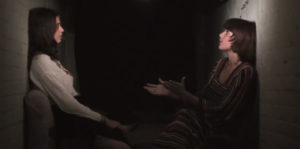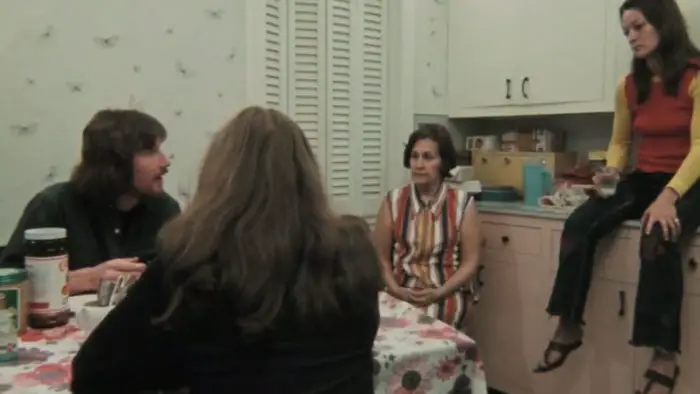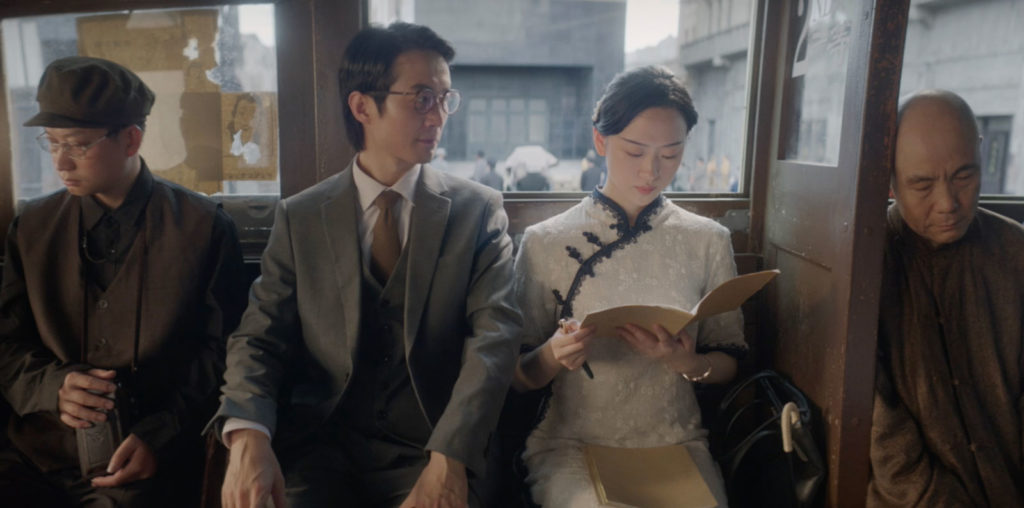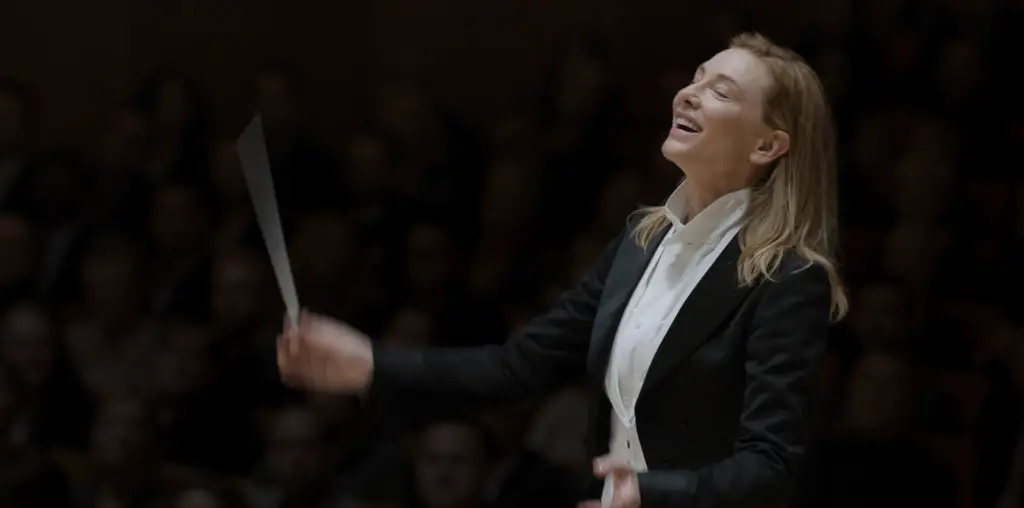
NOW IN THEATERS! Director Mireille Dansereau’s landmark Dream Life (La vie revee) was the first Canadian feature film from Quebec made by a woman. This unseen cinematic milestone is finally unearthed and is now getting its first stateside release after 50 years. Was the wait worth it?
Isabelle (Liliane Lemaitre-Auger) and Virginie (Veronique Le Flaguais) are in their 20s and working at a film production studio in Montreal. It is the dawn of the 1970s, and the rising counterculture now has a hand on the steering wheel of daily life. Isabelle is obsessed with an old married man, Jean-Jacques (Jean-Francois Guite), and fantasizes about the kind of life he could give her. Virginie focuses on building her career in animation but also has romantic yearnings.
The two friends often escape work to go on adventures. They picnic nude in a graveyard. They head out to a cabin in the woods with a health food nut hippie. Isabelle and Virginie go to an old-fashioned pot party. All the while, they discuss their hopes as well as what place they will hold in the changing world. Isabelle and Virginie explore their new freedoms against the tide of expectations. Will Isabelle make her fantasies flesh and chain Jean-Jacques? Can Virginie keep her dreams alive on a steady diet of reality?

“Isabelle and Virginie explore their new freedoms against the tide of expectations.”
Thanks to its clear and crisp 2K transfer, Dream Life looks flat-out dynamite. The colors are full and sharp, showcasing when everything was a deep shade of hippie. Dansereau gives us a gender-flipped Easy Rider, except with all the trippy stuff distributed throughout instead of all crammed at the end. Many times it feels like this could slip into full-blown experimental mode. Le Flaguais’ scene with the face paint is far out, man.
Several movies are well known for standout events, like The Exorcist and its pea-soup vomit and the fake orgasm from When Harry Met Sally. Dream Life will be known as the picnic nude in a graveyard movie. It’s such a unique and resonant scene. The smorgasbord of female nakedness throughout, with a garnish of man meat, is exhilarating and non-exploitative. The nudity has that freeing of shackles aura around it, another liberation from the old world wreckage. While the screenplay Dansereau co-wrote with Patrick Auzepy is supposed to reflect the loose flow of real life rather than dense plotting, the pace never slackens. All of this is heightened by the spare and lively score by Emmanuel Charpentier. It is so odd that a movie where marijuana is only seen fleetingly seems to have the presence of cannabis dripping from its pores.
It is baffling that a film as important as this has been hidden from the light of day. I would have thought the nudity alone would have made it commercially viable on the arthouse circuit. Admittedly, it would’ve been competing with the hardcore chic wave of graphic sex at the time. It is more likely that the Canadian aspect caused its unjust banishment from film lore, as media in that country during that time was fledgling. Their big show was about gathering driftwood and Canadian news reports instead of footage, used pictures hand drawn live during the broadcast. It’s the travesty of being an underestimated country at the time.
Dansereau’s work here reminds me a lot of Wim Wenders’s Kings of the Road, except her pacing is better. There is an energy in the camaraderie the leads generate that pours gasoline on the seemingly aimless drifting. We have a surprise masterwork here that I have never heard of, my favorite kind. Dream Life will always have historical importance as the first female-directed movie from Quebec, Canada. What a joy to find that it is such a strong, resilient work of art.
"…a strong, resilient work of art."


